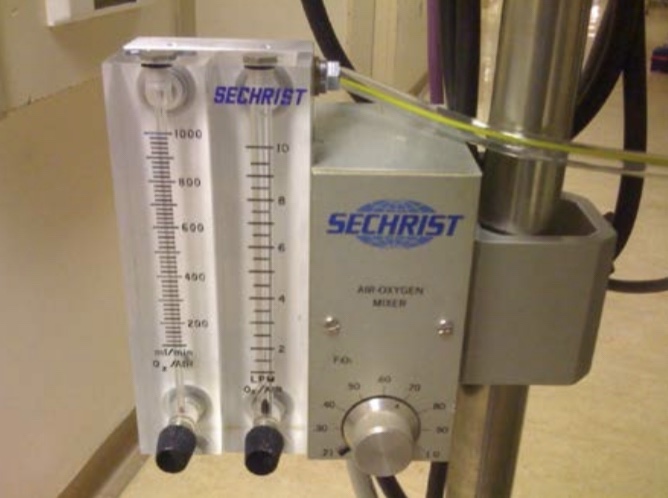Functional magnetic resonance imaging or functional MRI (fMRI) measures brain exercise by detecting changes related to blood move. This technique depends on the truth that cerebral blood flow and BloodVitals SPO2 device neuronal activation are coupled. When an space of the mind is in use, blood movement to that area additionally increases. For the reason that early 1990s, BloodVitals SPO2 fMRI has come to dominate mind mapping research because it doesn’t involve the use of injections, surgical procedure, the ingestion of substances, or publicity to ionizing radiation. This measure is ceaselessly corrupted by noise from numerous sources; hence, statistical procedures are used to extract the underlying sign. The resulting brain activation will be graphically represented by colour-coding the strength of activation across the brain or the specific region studied. The method can localize exercise to within millimeters however, utilizing commonplace techniques, BloodVitals SPO2 device no higher than within a window of some seconds. MRI. Diffusion MRI is just like Bold fMRI however supplies distinction based on the magnitude of diffusion of water molecules within the brain.
 In addition to detecting Bold responses from activity as a consequence of tasks or stimuli, fMRI can measure resting state, or adverse-job state, which shows the subjects’ baseline Bold variance. Since about 1998 studies have shown the existence and properties of the default mode community, a functionally related neural community of obvious resting brain states. MRI is used in research, BloodVitals SPO2 device and BloodVitals SPO2 device to a lesser extent, in clinical work. It will possibly complement other measures of brain physiology akin to electroencephalography (EEG), BloodVitals SPO2 device and near-infrared spectroscopy (NIRS). Newer strategies which enhance both spatial and time decision are being researched, and these largely use biomarkers other than the Bold sign. Some firms have developed business products comparable to lie detectors based on fMRI methods, however the research just isn’t believed to be developed sufficient for widespread business use. The fMRI concept builds on the earlier MRI scanning know-how and the discovery of properties of oxygen-wealthy blood.
In addition to detecting Bold responses from activity as a consequence of tasks or stimuli, fMRI can measure resting state, or adverse-job state, which shows the subjects’ baseline Bold variance. Since about 1998 studies have shown the existence and properties of the default mode community, a functionally related neural community of obvious resting brain states. MRI is used in research, BloodVitals SPO2 device and BloodVitals SPO2 device to a lesser extent, in clinical work. It will possibly complement other measures of brain physiology akin to electroencephalography (EEG), BloodVitals SPO2 device and near-infrared spectroscopy (NIRS). Newer strategies which enhance both spatial and time decision are being researched, and these largely use biomarkers other than the Bold sign. Some firms have developed business products comparable to lie detectors based on fMRI methods, however the research just isn’t believed to be developed sufficient for widespread business use. The fMRI concept builds on the earlier MRI scanning know-how and the discovery of properties of oxygen-wealthy blood.
MRI brain scans use a strong, uniform, static magnetic field to align the spins of nuclei within the brain region being studied. Another magnetic area, with a gradient strength moderately than a uniform one, is then applied to spatially distinguish completely different nuclei. Finally, a radiofrequency (RF) pulse is utilized to flip the nuclear spins, with the impact relying on the place they are situated, due to the gradient area. After the RF pulse, the nuclei return to their original (equilibrium) spin populations, and the power they emit is measured with a coil. The usage of the gradient discipline allows the positions of the nuclei to be determined. MRI thus provides a static structural view of brain matter. The central thrust behind fMRI was to extend MRI to capture purposeful changes in the mind brought on by neuronal activity. Differences in magnetic properties between arterial (oxygen-rich) and BloodVitals SPO2 venous (oxygen-poor) blood offered this link.
Since the 1890s, it has been known that modifications in blood flow and blood oxygenation within the brain (collectively known as brain hemodynamics) are intently linked to neural exercise. When neurons change into lively, local blood stream to those mind regions increases, and BloodVitals SPO2 device oxygen-wealthy (oxygenated) blood displaces oxygen-depleted (deoxygenated) blood round 2 seconds later. This rises to a peak over 4-6 seconds, before falling again to the unique stage (and sometimes undershooting slightly). Oxygen is carried by the hemoglobin molecule in purple blood cells. Deoxygenated hemoglobin (dHb) is extra magnetic (paramagnetic) than oxygenated hemoglobin (Hb), which is nearly resistant to magnetism (diamagnetic). This distinction leads to an improved MR signal since the diamagnetic blood interferes with the magnetic MR sign less. This enchancment may be mapped to show which neurons are energetic at a time. Throughout the late nineteenth century, Angelo Mosso invented the ‘human circulation steadiness’, BloodVitals test which might non-invasively measure the redistribution of blood during emotional and blood oxygen monitor intellectual exercise.
However, though briefly mentioned by William James in 1890, the small print and exact workings of this steadiness and the experiments Mosso performed with it remained largely unknown until the latest discovery of the original instrument as well as Mosso’s stories by Stefano Sandrone and colleagues. Angelo Mosso investigated several critical variables which are still related in modern neuroimaging such as the ‘sign-to-noise ratio’, the suitable selection of the experimental paradigm and the need for monitor oxygen saturation the simultaneous recording of differing physiological parameters. Mosso-that a steadiness apparatus of this type is ready to detect adjustments in cerebral blood volume associated to cognition. In 1890, Charles Roy and Charles Sherrington first experimentally linked brain function to its blood stream, at Cambridge University. The next step to resolving methods to measure blood flow to the brain was Linus Pauling’s and Charles Coryell’s discovery in 1936 that oxygen-wealthy blood with Hb was weakly repelled by magnetic fields, while oxygen-depleted blood with dHb was attracted to a magnetic subject, although less so than ferromagnetic elements similar to iron.







